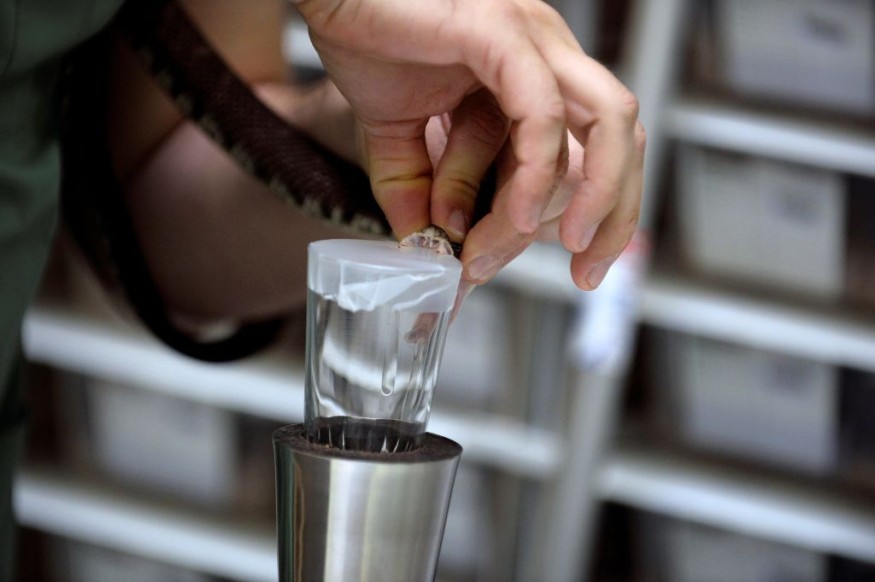Scientists from Western University in Canada have created super glue from the venom of the poisonous lancehead snakes. The snake venom contains a blood-clotting enzyme, called reptilase or batroxobin, that serves as an adhesive that sticks to body tissue that can be used to prevent life-threatening bleeding in just 45 seconds.
"During trauma, injury and emergency bleeding, this 'super glue' can be applied by simply squeezing the tube and shining a visible light, such as a laser pointer, over it for few seconds," Western University engineering professor and study co-author Kibret Mequanint told Western News.
Even the light from a smartphone flashlight will do.

Snake Venom-Derived Super Glue
Mequanint has been developing medical devices and therapeutic technologies made from biomaterials over the past two decades, in which some are either licensed to medical companies or are in the advanced stage of preclinical testing.
According to Science Daily, his latest project is a collaboration with other scientists on a blood-clotting enzyme found in the venom of one of the most poisonous snakes in South America, known as lancehead snakes (Bothrops atrox).
They took advantage of the clotting ability of the snake venom and designed a body tissue adhesive that is combined with modified gelatin that can be put into small tubes for an easy and life-saving application of the snake venom-derived super glue.
This new biotechnology could help prevent excessive bleeding and save many lives. The team tested the super glue in models developed for deep skin cuts, ruptured aorta, ad severely injured livers, all of which were considered to be major bleeding situations. They also tested it on a cut rat tail, wherein it stopped the bleeding in 34 seconds and recorded a 78% decrease in blood loss.
Mequanint said that they hope for this snake venom-derived s8uper glue to be used in saving lives, particularly on the battlefield, or other injuries and traumas like car accidents. It is packaged in an easy-to-use applicator that could fit inside first aid kits for easy storage.
Snake Venom-Derived Super Glue vs. Fibrin
Lancehead snakes are one of the most poisonous snakes found in South America. It could reach up to 20 and 50 inches and have been known to prey on coffee and banana plantations, attacking humans without warning.
The venom yield of lancehead snakes is 124 milligrams on average but could reach up to 342 milligrams, according to Daily Mail. The sealant characteristic of their venom is ten times the adhesive strength of clinical fibrin glue.
Fibrin is considered to be the "gold standard" for surgeons to prevent bleeding. According to an article in the National Library of Medicine, fibrin sealants are used to augment hemostasis, seal tissues, and facilitate targeted delivery of medicine.
But the new snake venom-derived super glue can stop bleeding at a significantly shorter than fibrin glue at only 45 seconds compared to fibrin which promotes blood clotting for 90 seconds.
This resulted in less blood being lost and ultimately will save more lives. More so, the super glue made from lancehead snake venom can be used for suture-free wound closures.
The new super glue is described in their study, titled "Snake extract-laden hemostatic bioadhesive gel cross-linked by visible light," published in Science Advances.
RELATED ARTICLE: New Life-Saving Device Can Act as First Aid to Stop Bleeding from Stab Wounds
Check out more news and information on Venom in Science Times.










